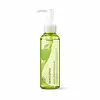What's inside
What's inside
 Key Ingredients
Key Ingredients

No key ingredients
 Benefits
Benefits

 Concerns
Concerns

 Ingredients Side-by-side
Ingredients Side-by-side

Cetyl Ethylhexanoate
EmollientIsopropyl Palmitate
EmollientTriethylhexanoin
MaskingCaprylic/Capric Triglyceride
MaskingPolyglyceryl-6 Dicaprate
EmulsifyingCocos Nucifera Oil
MaskingPolyglyceryl-10 Diisostearate
EmulsifyingDiisostearyl Malate
EmollientPolyglyceryl-6 Caprylate
EmulsifyingParfum
MaskingWater
Skin ConditioningCoco-Caprylate/Caprate
EmollientPyrus Malus Seed Oil
EmollientPyrus Malus Fruit Extract
Skin ConditioningButylene Glycol
Humectant1,2-Hexanediol
Skin ConditioningCetyl Ethylhexanoate, Isopropyl Palmitate, Triethylhexanoin, Caprylic/Capric Triglyceride, Polyglyceryl-6 Dicaprate, Cocos Nucifera Oil, Polyglyceryl-10 Diisostearate, Diisostearyl Malate, Polyglyceryl-6 Caprylate, Parfum, Water, Coco-Caprylate/Caprate, Pyrus Malus Seed Oil, Pyrus Malus Fruit Extract, Butylene Glycol, 1,2-Hexanediol
Caprylic/Capric Triglyceride
MaskingCetyl Ethylhexanoate
EmollientIsononyl Isononanoate
EmollientPEG-7 Glyceryl Cocoate
EmulsifyingIsopropyl Myristate
EmollientSimmondsia Chinensis Seed Oil
EmollientGlycine Soja Oil
EmollientSesamum Indicum Seed Oil
EmollientRibes Nigrum Seed Oil
EmollientTocopheryl Acetate
AntioxidantPEG-20 Glyceryl Triisostearate
EmollientPolysorbate 20
EmulsifyingParfum
MaskingButyrospermum Parkii Butter
Skin ConditioningCarapa Guaianensis Seed Oil
Skin ConditioningVaccinium Macrocarpon Seed Oil
Skin ConditioningCaprylic/Capric Triglyceride, Cetyl Ethylhexanoate, Isononyl Isononanoate, PEG-7 Glyceryl Cocoate, Isopropyl Myristate, Simmondsia Chinensis Seed Oil, Glycine Soja Oil, Sesamum Indicum Seed Oil, Ribes Nigrum Seed Oil, Tocopheryl Acetate, PEG-20 Glyceryl Triisostearate, Polysorbate 20, Parfum, Butyrospermum Parkii Butter, Carapa Guaianensis Seed Oil, Vaccinium Macrocarpon Seed Oil
 Reviews
Reviews

Ingredients Explained
These ingredients are found in both products.
Ingredients higher up in an ingredient list are typically present in a larger amount.
This ingredient is an emollient, solvent, and texture enhancer. It is considered a skin-softener by helping the skin prevent moisture loss.
It helps thicken a product's formula and makes it easier to spread by dissolving clumping compounds.
Caprylic Triglyceride is made by combining glycerin with coconut oil, forming a clear liquid.
While there is an assumption Caprylic Triglyceride can clog pores due to it being derived from coconut oil, there is no research supporting this.
Learn more about Caprylic/Capric TriglycerideCetyl Ethylhexanoate is an emollient ester. It comes from cetearyl alcohol and 2-ethylhexanoic acid.
Cetyl Ethylhexanoate is an emollient that adds a velvety feel to skin without being greasy or oily. Emollients help trap moisture into your skin, keeping your skin soft and hydrated.
Parfum is a catch-all term for an ingredient or more that is used to give a scent to products.
Also called "fragrance", this ingredient can be a blend of hundreds of chemicals or plant oils. This means every product with "fragrance" or "parfum" in the ingredients list is a different mixture.
For instance, Habanolide is a proprietary trade name for a specific aroma chemical. When used as a fragrance ingredient in cosmetics, most aroma chemicals fall under the broad labeling category of “FRAGRANCE” or “PARFUM” according to EU and US regulations.
The term 'parfum' or 'fragrance' is not regulated in many countries. In many cases, it is up to the brand to define this term.
For instance, many brands choose to label themselves as "fragrance-free" because they are not using synthetic fragrances. However, their products may still contain ingredients such as essential oils that are considered a fragrance by INCI standards.
One example is Calendula flower extract. Calendula is an essential oil that still imparts a scent or 'fragrance'.
Depending on the blend, the ingredients in the mixture can cause allergies and sensitivities on the skin. Some ingredients that are known EU allergens include linalool and citronellol.
Parfum can also be used to mask or cover an unpleasant scent.
The bottom line is: not all fragrances/parfum/ingredients are created equally. If you are worried about fragrances, we recommend taking a closer look at an ingredient. And of course, we always recommend speaking with a professional.
Learn more about Parfum